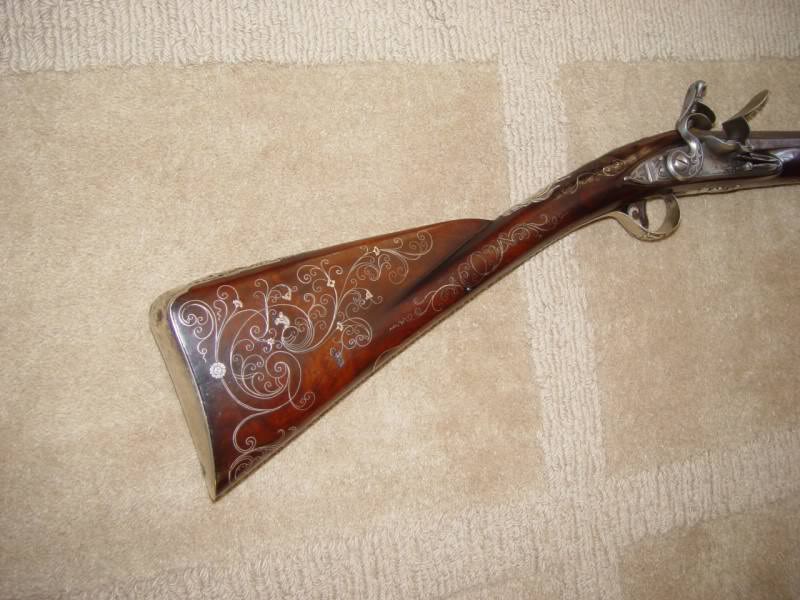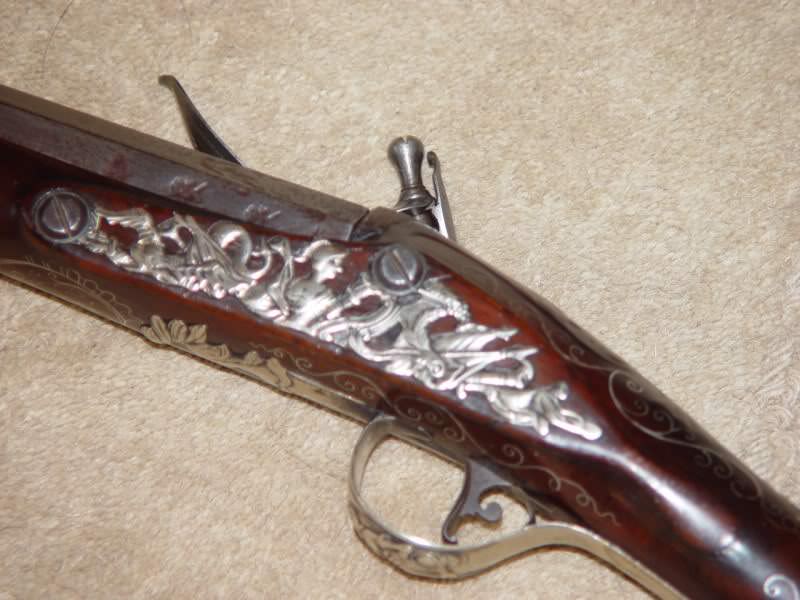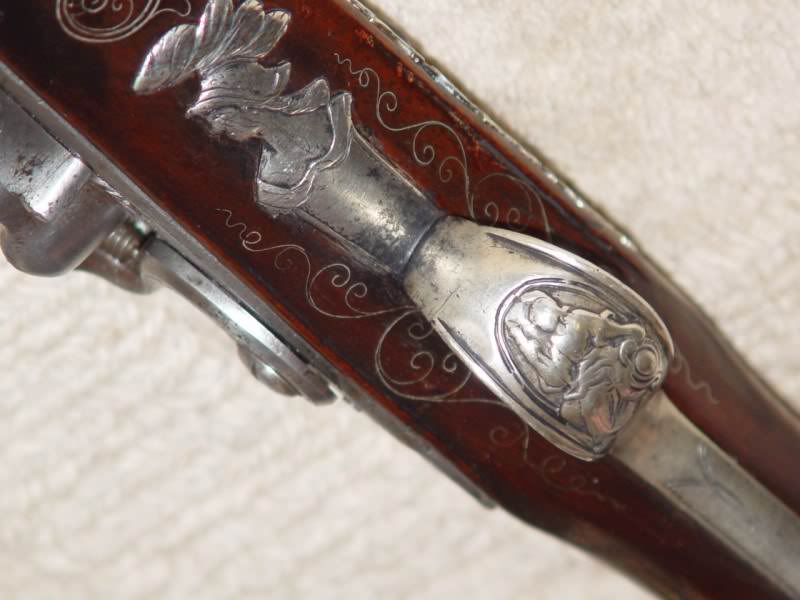I've seen conflicting information on german silver. Some european early guns were reported to have somegerman silver ornamentation while some sources state german silver manufacturing didn't exist prior to 1832.
Excerpt from Wikipedia:
In Europe, consequently, it was at first called paktong, which is about the way baitong is pronounced in the Cantonese dialect.[12] The earliest European mention of paktong occurs in the year 1597. From then until the end of the eighteenth century there are references to it as having been exported from Canton to Europe.[12] German imitations of paktong, however, began to appear from about 1750 onward.[12] In 1770 the Suhl (Germany) metalworks were able to produce a similar alloy.[13] In 1823 a German competition was held to perfect the production process: the goal was to develop an alloy that possessed the closest visual similarity to silver. The brothers Henniger in Berlin and Ernst August Geitner in Schneeberg independently achieved this goal. The manufacturer Berndorf named the trademark brand Alpacca, which became widely known in northern Europe for nickel silver. In 1830 the German process of manufacture was introduced into England, while exports of paktong from China gradually stopped. In 1832, a form of German silver was also developed in Birmingham, England.[14]
In the forum's vast storehouse of knowledge does anyone know if German silver was used on any colonial rifles of smoothbores prior to 1785?
Thank you!
Excerpt from Wikipedia:
In Europe, consequently, it was at first called paktong, which is about the way baitong is pronounced in the Cantonese dialect.[12] The earliest European mention of paktong occurs in the year 1597. From then until the end of the eighteenth century there are references to it as having been exported from Canton to Europe.[12] German imitations of paktong, however, began to appear from about 1750 onward.[12] In 1770 the Suhl (Germany) metalworks were able to produce a similar alloy.[13] In 1823 a German competition was held to perfect the production process: the goal was to develop an alloy that possessed the closest visual similarity to silver. The brothers Henniger in Berlin and Ernst August Geitner in Schneeberg independently achieved this goal. The manufacturer Berndorf named the trademark brand Alpacca, which became widely known in northern Europe for nickel silver. In 1830 the German process of manufacture was introduced into England, while exports of paktong from China gradually stopped. In 1832, a form of German silver was also developed in Birmingham, England.[14]
In the forum's vast storehouse of knowledge does anyone know if German silver was used on any colonial rifles of smoothbores prior to 1785?
Thank you!







